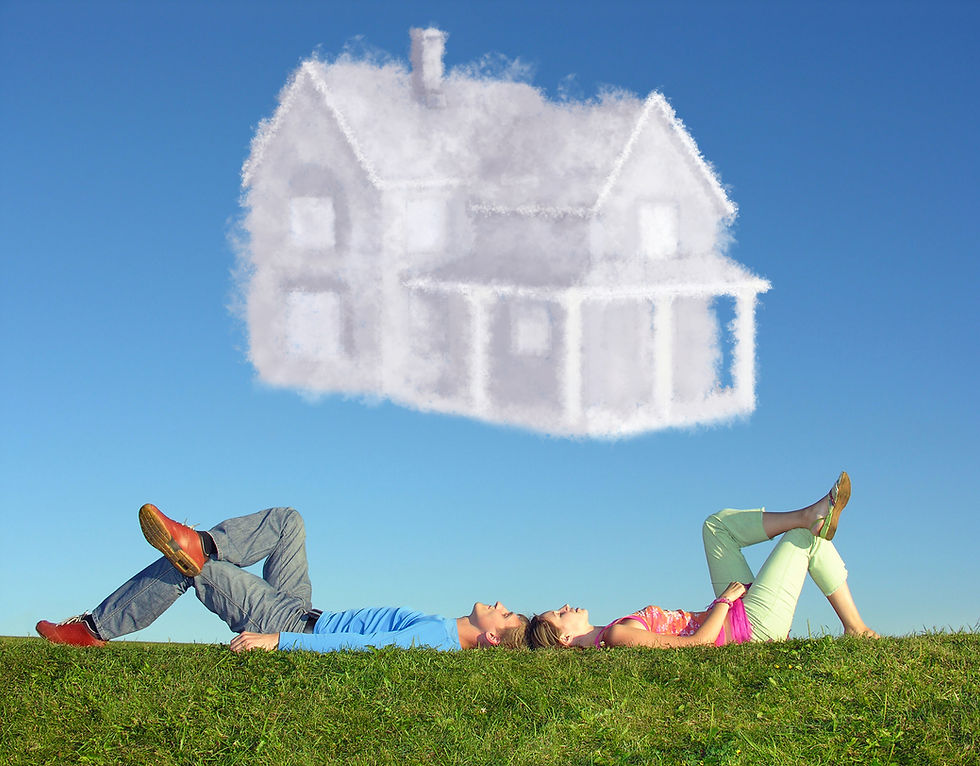Landscape Lights Add Finishing Flourish to Yard Makeover
- Marni Jameson

- Jul 12, 2020
- 4 min read
Updated: Jul 20, 2020

“Are we done yet?” My husband, DC, wants to know as he writes one more check in an endless stream for our outdoor landscaping project. We love how the project is turning out, but the flow of outbound checks, which he is now signing in blood, less so.
“Not quite,” I said, wincing. I hated to break it to him.
The initial five-figure quote from our landscape designer for our backyard project seemed comprehensive. It covered demolition, grading, travertine for the patio, beach rock, plant materials, mulch, the irrigation system, labor and oversight. Not included, however, were the non-optional “extras.” In addition to the base price, we shelled out for large tree removal, fence reconfiguration, a wall fountain, fire bowls, gas-line installation, patio furniture, Adirondack lawn chairs, outdoor ceiling fans, decorative pots, and outdoor cushions, which altogether almost doubled the cost. (Thank goodness we decided against the pool, or costs would have really gone the way of the Falcon 9 SpaceX rocket.)
“What’s left?” he asked in a what-organ-do-I-need-to-sell tone.
“Lighting,” I said.
He sighs.
I sigh back.
We both knew, to do this job right, lighting was not optional.
“How much?” he asked.
“I’ll find out.”
And this is why so many homes are dark.
“You see these homeowners who put tens of thousands into their landscaping and skip the lighting,” said Matt Tralka, head of sales for Southern Outdoor Lighting, of Maitland, Fla.
“I get that,” I said.
“They get almost to the goal line then drop the ball,” adds David Martin, design team leader for Hubbardton Forge, a Vermont lighting manufacturer.
They’re right, of course. Ending a design project, whether inside or out, and not lighting it is like wrapping a gift and leaving off the bow. Lighting in design is the olive in the martini, the perfume on the bride. But it also often falls outside the depleted budget.
“Fortunately,” Martin added, before we got too depressed, “since people have started staying home more, interest in outdoor lighting is up. They’re bored inside, so are making the most of their outdoor spaces.”
As they do, they are finding how much better outdoor lights have gotten over the past few years. “A lot of homes still have halogen outdoor lights and need to update to LEDs,” Tralka said. Halogen lights use 10 times more power than LEDs and burn out 10 times faster.
But better bulbs aren’t the only reason to brighten your landscape. Do it for the drama. When you’re ready to lay on the lights, here’s what these experts say to consider.
Remember the dark side. “Look at the outdoors like a theater,” Martin said. “The secret is to selectively light. We need darkness to create drama and contrast. Anyone can fill a yard with boring light, but the darkness is as important as the light.”
Be intentional. A good lighting design considers safety, security, aesthetics and the neighbors. Select the features you want to highlight, such as the home’s entrance where light can draw you in as you make an approach; significant trees, and other features like pools or fountains. Then consider softly lighting a path for way finding, especially by steps. Light areas, such as other entrances, to add security, and don’t outshine your neighbors, but rather respectfully blend.
Softer is better. Many homeowners mistakenly believe they need outside lights to be brighter to compensate for the darkness, but the opposite is true, Martin said. “Eyes adjust to the dark, so a little light in the darkness goes a long way. Lights that are too bright detract.”
Beam it up. Generally, landscapes and structures look better lit with up lights from below. Downlights can create unwelcome shadows, and a less-appealing result, Martin said. However, neighborhoods that want to tamp down on light pollution, which can interfere with the beauty of the dark sky, may only allow downlights or occasional post lights. Consider your neighbors.
Focus on the light not the fixture. Unlike indoor light fixtures, which are often sculptural décor features, outdoor landscape lights are usually best unseen. “Aim for invisibly gorgeous,” said Martin. That also means hiding the wires, added Tralka. “Visible wires are a DIY giveaway.”
Keep it white. Save the colored lights for Christmas. Although new LED light technology allows for multicolor lighting outdoors, keep residential lighting white. “While colored lights are more common in commercial settings, 99% of the residential lights we install are white,” said Tralka. Keep light temperatures consistent, too. For my house, I opted for not just white, but warm white (2700 Kelvins), which resembles the color of candleflame. Those who prefer a crisper white may opt for 3000K.
Watch your hot spots. Misplaced light beams are another common mistake. For instance, the beauty of a tree is typically its canopy, but you often see lights that highlight the tree trunk and miss the main event, Tralka said. The solution: back the light up and adjust the beam spread, so it hits the pretty part.
Plan to invest. Because outdoor lights take a weather beating, avoid inexpensive plastic fixtures, which won’t last. Choose metal ones that resist rust and that have gasket seals to block moisture. For good quality LED fixtures, expect to pay around $200 per fixture installed, Tralka said. A typical residential project with a lighted façade and eight or so up-lit trees will cost between $2,000 and $2,500, he said including the transformer and digital timer.
The estimate from the company we selected fell in that range. The lights will go in next week.
“Then will we be done?” DC asked.
“Does a martini have olives?”
CAPTION: After-Dark Drama -- Often an afterthought, outdoor landscape lighting lets homeowners enjoy their outdoor spaces for far more than half the day. Photo courtesy of Southern Outdoor Lighting.




Comments